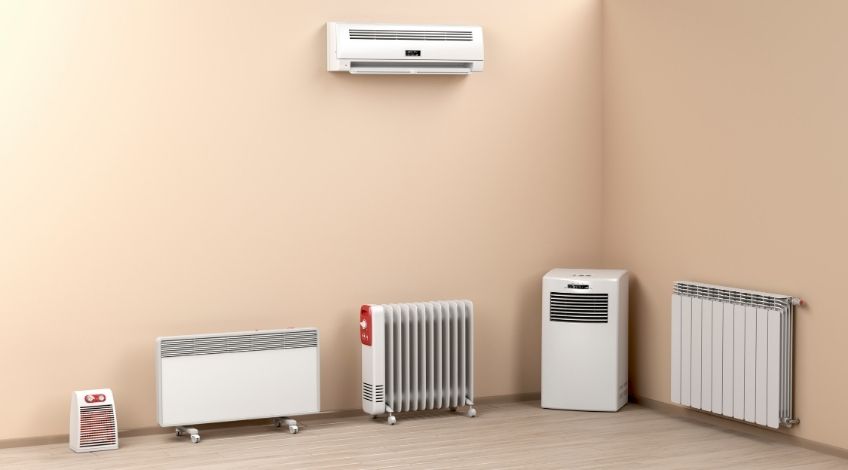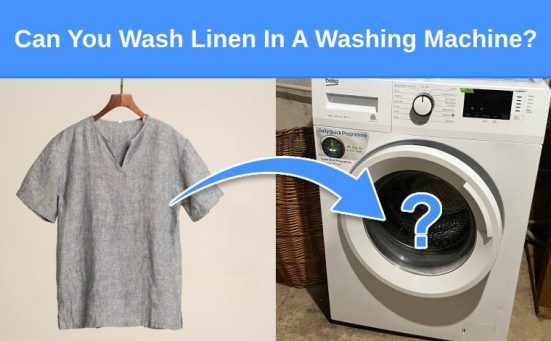
Why You Shouldn’t Dry Clothes On A Radiator (read this first)
When the weather’s bad and there’s no chance of getting your laundry dry outdoors especially during winter months, many will turn to their radiators to get clothes dry. This is a bad idea for many reasons, including it will cost you more money, can damage your health and can damage your home as well.
To find out exactly what the problem is with using radiators to dry clothes, keep reading.
Why Is Drying Clothes On A Radiator A Bad Idea?
On the face of it, drying clothes on a radiator during winter months makes sense, the radiator’s working anyway and it’s easy to drape clothes on the top. However, as we said earlier, it’s a really bad decision to make.
There are several reasons why using a radiator to dry clothes is not a good idea. They include;
Increased Energy Costs
Radiators are controlled by thermostats that are set to keep your room at a certain temperature. Once that temperature has been reached, the radiator will cut out until the room’s temperature drops below that set level. The radiator then cuts in again and so on.
The problem is that once you cover the radiator in wet clothes, it has to work harder to reach that set temperature. This is because the wet clothes actually block the heat from leaving the radiator so it can’t heat the room, which means the thermostat registers that the room needs more heat.
This leads to the radiator having to produce more heat which in turn, means the boiler has to work harder to produce heat. This means burning more electricity or gas depending on the power used to run your radiators.
With recent energy price hikes, none of us wants to be paying for more energy than we need to.
Can Cause Serious Illness
When the radiator is covered with wet clothes the hot air pumped out of the radiator forces water molecules from those clothes as they dry. That damp hot air settles on the first cool object it comes to and condenses.
That cool object is usually a wall, window sill, window or floor. Now that moisture then accumulates and is the perfect place for mould spores to thrive. The first you’re likely to know about this is those black patches that start appearing on the walls.
Aspergillus Fungal Spores
Some of these mould spores can be from the genus aspergillus which can be harmful for some people. Particularly asthma sufferers or those with COPD or those with impaired immune systems. People that fall into these categories can suffer from pulmonary aspergillosis. This condition can affect the lungs, windpipe and sinuses and can be fatal.
The severity of the problems caused by pulmonary aspergillosis depends on a number of factors including;
- Age
- Existing Health Problems
- The Number Of Spores That Have Been Breathed In
All of these health complications could so easily be avoided by not drying clothes on a radiator.
Rusty Radiators
Central heating radiators are made from metals which if exposed to too much moisture can become rusty. This can eventually lead to the rotting of the radiator which could have serious implications for your home and central heating system.
Damage To The Home
Mould patches and dampness can lead to minor issues like redecorating the home which can be costly and time consuming. However there are more serious issues that can lead on from this.
You see, when walls and woodwork get damp, the first thing usually to suffer is wallpaper. This can start bubbling and peeling which looks unsightly. Then you’ll notice black mould patches on walls and ceilings and eventually rotting wooden window frames, sills or even floorboards.
That’s all bad enough and will cost quite a bit to put right. But there’s also the damage that could be occurring behind the scenes. Like floor joists, roof supports etc. If any of these start to rot, you could have serious problems that could cost literally thousands to repair.
Why Is Damp Such A Problem?
The main reason why damp has become such a problem in our homes is because of improved home insulation. You see, back in the old days most homes relied on a coal fire with an open fireplace to heat the room.
Due to scientific principles, moisture was sucked up the chimney and out of the house. But as we modernised our homes and introduced double glazing, draught proofing and generally improved insulation all round, there’s nowhere for the damp to escape.
This means it accumulates on the first cool surface it comes to. Now it’s not just wet clothes on a radiator that causes the problems, there’s also moisture caused by cooking and baths and showers too.

Can Drying Clothes On A Radiator Cause Fires?
It’s unlikely that drying clothes on a radiator will cause a fire. With that said, if your radiators are powered by electricity the risk is far higher than if they’re gas powered.
Anything electrical is liable to catching fire under the wrong conditions and plug in electric radiators definitely fall into that category. A short in the electrical circuit can lead to sparks flying and as clothes dry they become more likely to ignite under those conditions.
However, wall mounted gas central heating radiators are unlikely to cause a fire. But that doesn’t mean it’s a good idea to dry clothes on them.
Can You Dry Clothes Indoors?
Of course, during cold winter months or even wet summer months, you still need to get laundry dry. So how can you dry clothes indoors if not on a radiator? We’ll get into other indoor drying methods in a bit but first we have an important matter that needs addressing.
Adequate Ventilation
As we just said, because the moist air has no means of escape it collects on walls, floors, windows etc. This then leads to mould, rot and other complications.
Providing the moist air a way out can save many of these problems from starting. All you need to do is open a window and it doesn’t need to be fully open either (which is good news in bad weather). The window just needs to be open enough to allow warm, moist air an escape route.
Dehumidifier
- 10L MAXIMUM EXTRACTION RATE – Removes up to 10L of water in 24 hours
- 30M2 ROOM SIZE – Perfect for medium size spaces such as bedrooms and utility rooms
Investing in a dehumidifier is a great way to help remove damp air from your home and works particularly well with drying laundry. Dehumidifiers work by removing moisture from the air, the damp air is sucked into the unit where it hits a condenser which turns the moisture into water.
That water drops into a water tank or reservoir which will need to be emptied regularly. You’ll be surprised at just how quickly the water tank fills up, especially when you consider that the average size of the reservoir on a dehumidifier is 10 litres.
Other Ways To Dry Clothes Indoors
Let’s look at other ways to get clothes dry indoors when the weather’s bad. A good tip when trying to dry clothes indoors is to always give them an extra spin cycle to remove even more water.
This will decrease the amount of time needed to dry your clothes whichever drying method you choose.
Drying Clothes Indoors On A Clothes Airer
- Weather-Resistant Materials: For outdoor use, a Laundary Clothes Drying Rack made from weather-resistant materials such as rust-resistant metal or UV-resistant plastic can withstand various weather conditions.
- Adjustable Tiers: 3 Tier Airer may come with adjustable tiers, allowing you to customize the drying space based on the size of your laundry load.
Ironically, you can still dry clothes using the heat from a radiator without creating many of the problems mentioned above. All you need to do is set up a clothes airer and place it in front of the radiator.
The heat from the radiator will help dry the clothes without being restricted because the clothes aren’t actually blocking the flow of heat.
The secret to good clothes drying using a clothes airer is to place the items correctly on the racks. You need to put smaller items at the bottom with larger items working up towards the top.
Using a clothes airer in conjunction with a dehumidifier is the best option as this gives you the best of both worlds. The clothes get dry without spreading wet air all around the room.
Using A Heated Clothes Airer To Dry Clothes Indoors
- Dries laundry quickly and efficiently
- Circulates hot air around your clothes
Heated airers are designed in a similar way to regular clothes airers but with the addition of a heating element. The bars heat up which makes the clothes dry faster.
Many heated clothes airers come supplied with a cover to keep the heat and moisture contained. If yours doesn’t have a cover, you can use a bedsheet to cover it as this will do the same thing.
Use A Radiator Rack
- DRY MORE CLOTHES - There are five rails on the drying rack so you may hang your laundry from them to dry more things at once. Improve your efficiency and hasten the drying of all of your family's clothes. This radiator airer is quite useful because it works well for airing out and drying towels and apparel. This clothesline is sturdy enough to handle your dirty clothing while remaining lightweight enough to avoid scratching any vertical surfaces you hang it from, such a door, radiator, or other.
- SPACE SAVING AND 5 HANGING BARS - This item has a modern, high-end design that is both beautiful and well-made. Useful and transportable for usage in various places throughout the house or trailer. easily cleaned with a moist towel or duster. Improve your laundry efficiency to hasten the drying process. The Straame radiator rack is the ideal accessory for any hectic lifestyle.
These racks are designed to be attached to the radiator and allow enough room for the heat to circulate around the room whilst still getting clothes dry.
They can be removed when not in use and easily refitted when you have clothes to dry.
Using A Heated Towel Rail To Dry Clothes
Many homes have a heated towel rail in the bathroom and these are the exception to the no clothes on a radiator rule. Heated towel rails are designed to put damp towels on and so it’s OK to put damp clothes on them.
Plus with it being in the bathroom, you’ll probably have an extractor fan in the wall too. The extractor fan will help remove the moist air from the room which is expelled from the clothes as they dry. This will help prevent damp and mould.
Using A Clothesline To Dry Clothes
- Hassle-Free Laundry & Cleaning - Experience Hassle-Free Laundry & Cleaning with our extraordinary 18x9x16cm wall-mounted heavy duty retractable washing line for clothes dryers. Say goodbye to cramped spaces and embrace the freedom of our retractable washing line outdoor! It's time to revolutionize the way you do laundry. Upgrade your laundry experience with our washing line retractable outdoor, the epitome of convenience and style.
- No Unsightly Wires - No more unsightly wires ruining the aesthetics of your beautiful home. Our ingenious cloths line features an extra long retractable washing line mechanism, effortlessly rolling back the invisible string once you're done drying your clothes. Your surroundings will always maintain a neat and tidy appearance, whether it's your yard, garden, lawn, or balcony.
We know what you’re thinking, a clothesline in the middle of winter??? You can however buy retractable clotheslines that can be extended indoors either in spare rooms or bathrooms. Once the clothes are dry and the line is no longer needed, it can be retracted into the unit.
It then takes up no room and the room can go back to its regular use.
Tumble Drying Clothes
If the weather’s really bad and you need clothes to dry fast, resorting to the tumble dryer could be your best course of action. You’ll need to check the care label first and never use a heat setting that’s too high for the fabric.
However, tumble drying clothes can be expensive so it should be used as a last resort. Especially with the cost of energy nowadays.
SEE ALSO: Best Vented Tumble Dryers (top UK dryers reviewed)
Using A Utility Room
If you’re fortunate enough to have a utility room, this is a great place to dry clothes. Ideally, a utility room should have a window, extractor fan and be kept fully ventilated.
Drying Clothes In The Garage
If you have a garage, it is probably well ventilated and dry. You can fix a clothesline or retractable clothesline up in your garage and get clothes dry in there.
As there is probably not any heat in your garage it could take a long time to get clothes dry but it will prevent any moisture forming in your home.
What Do You Think?
Have you used any of the methods mentioned in this article? How did it turn out? Let us know in the comments below.
SEE ALSO: 12 Tumble Dryer Alternatives: How to dry clothes indoors without a Dryer
Frequently Asked Questions
It is not a good idea to dry clothes directly on a radiator for various reasons which include; it means the radiator has to work harder to reach its required heat, the room will become damp which can cause discomfort for anyone with breathing difficulties like COPD and asthma, as well as causing damage to the home from mould to rotting timbers etc.
It is always going to be cheaper to dry clothes in a tumble dryer if you have a large amount of clothes to dry. Drying a few bits on the radiator could cost more than you think. Especially when you consider the hidden costs of extra heating to get the room to the required temperature, any repair bills from associated damp problems etc.
Scientific studies have shown that up to 30% of the moisture found in our homes is caused by drying clothes indoors.









